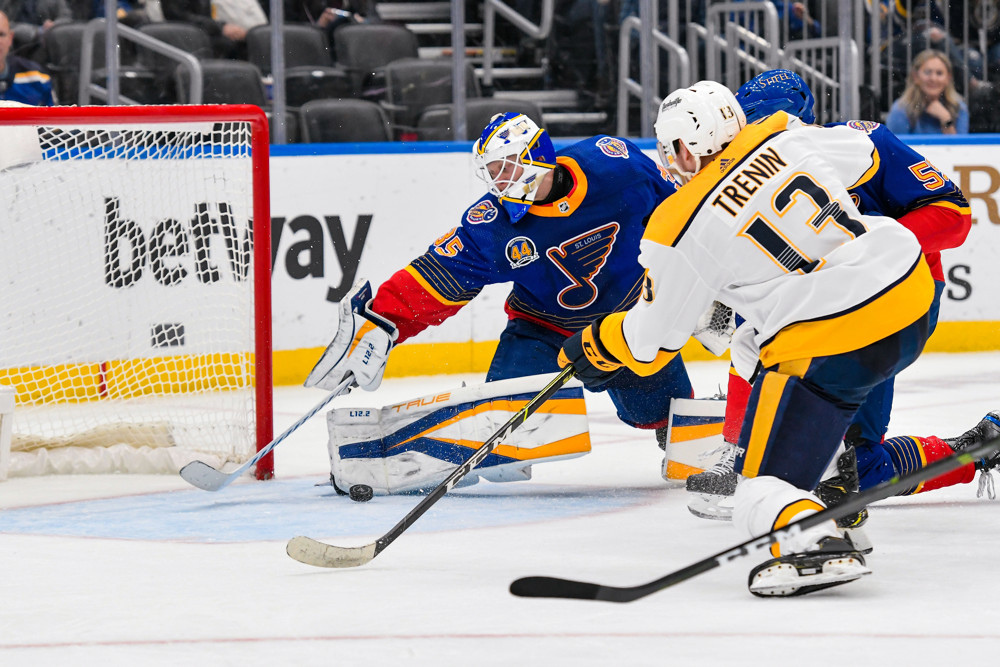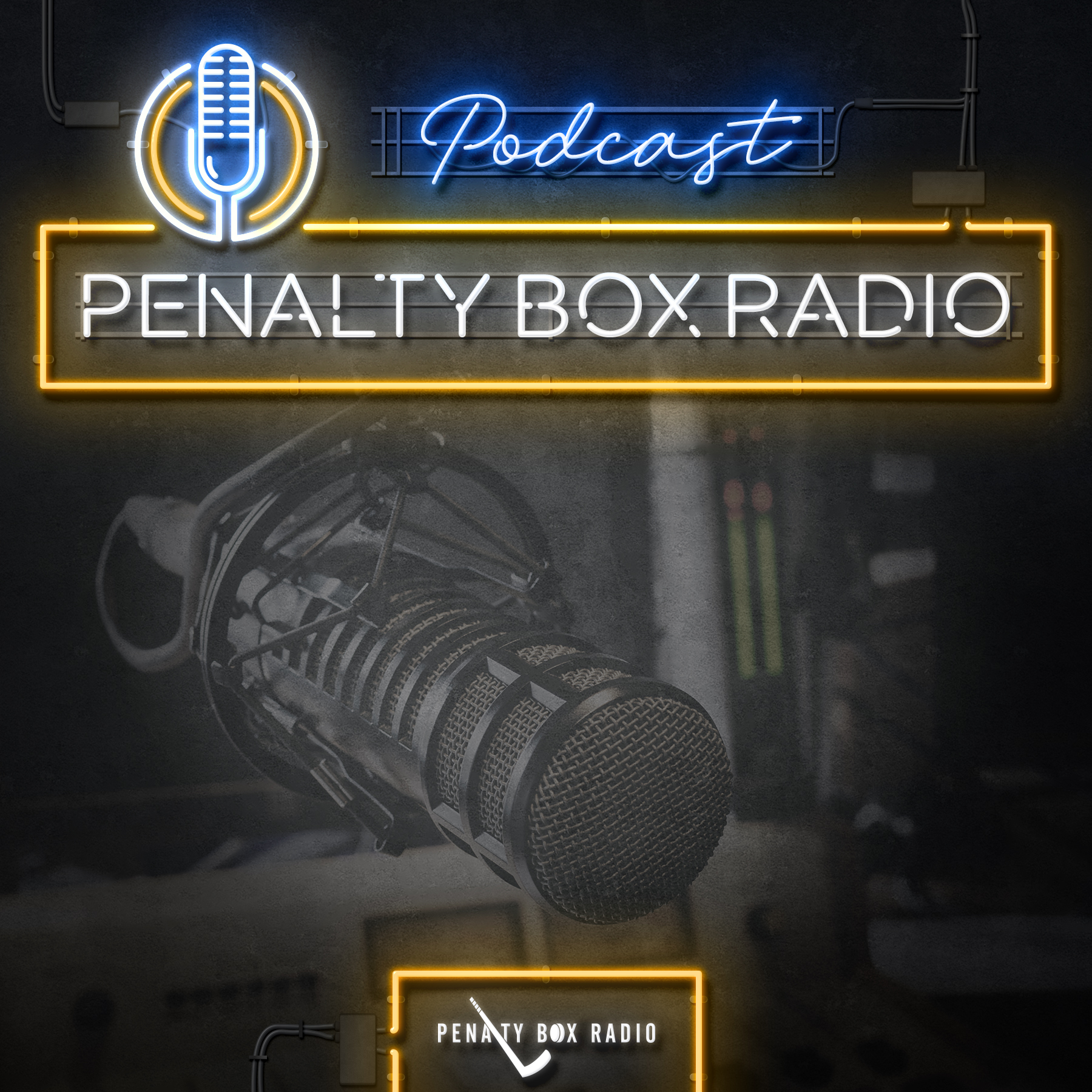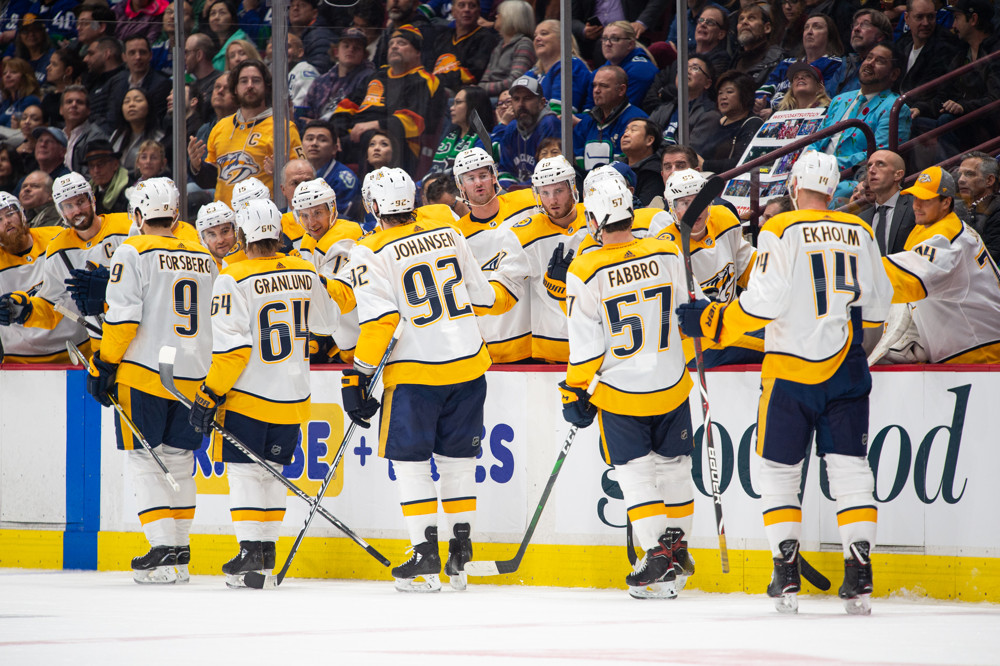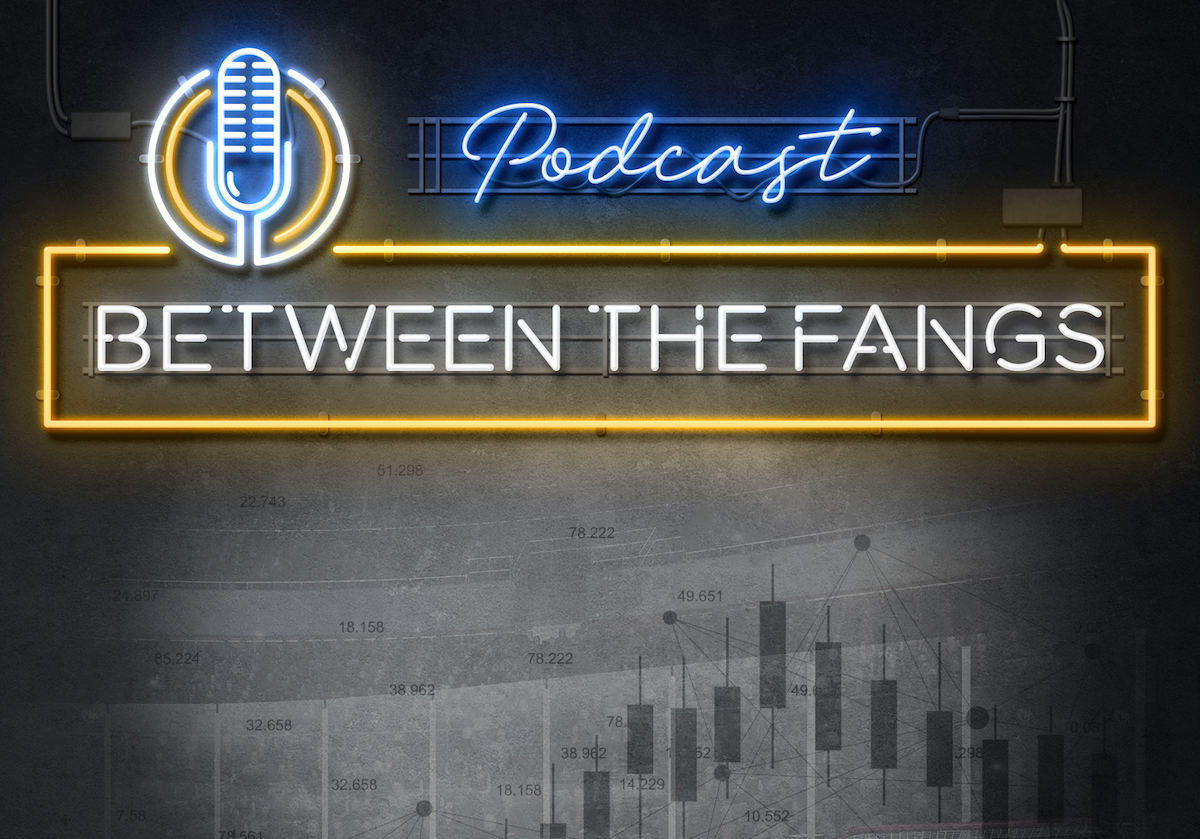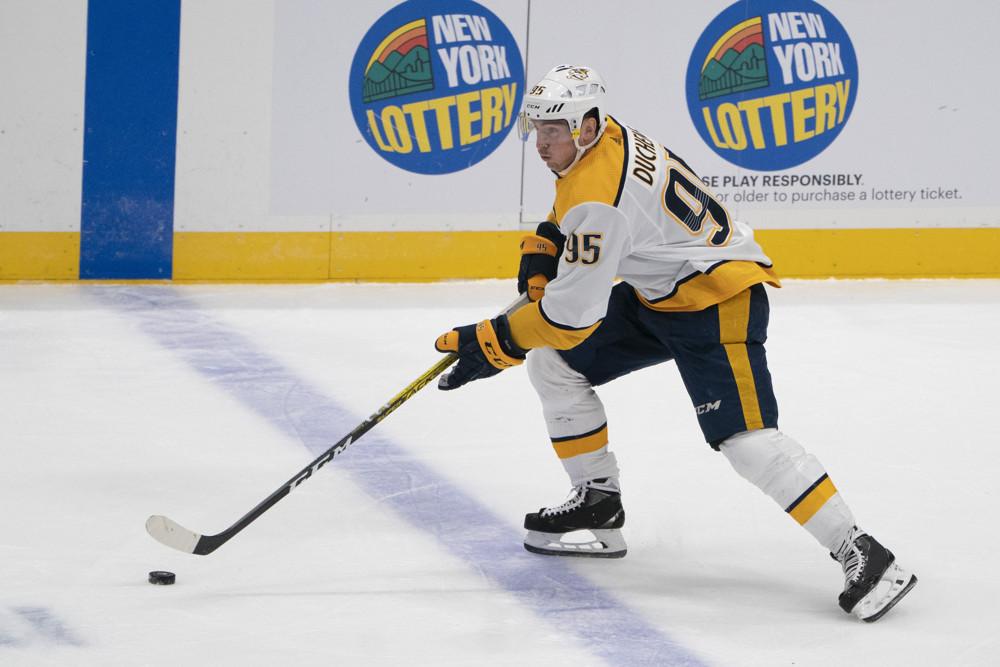
“Ryan Johansen is not earning his salary.”
Not uncommonly, I see the above argument from members of the Nashville Predators fanbase in one form or another. To be fair, the team’s primary center is earning just shy of 11% of their total cap hit this season, which opens him up to some enhanced scrutiny.

Expectation does funny things to our perception of players. To many, even if subconsciously, salary is simply a measurement of that expectation. As the Predators’ second-highest earner, Johansen is obviously being relied on for big-time contributions on a nightly basis.
Currently, the 26-year old is leading the team in terms of point production (though they are certainly missing some major competitors in that race). Still, after many games – and certainly every loss – you’ll find “Johansen needs to do more” comments gaining some traction.
So, what gives? Who exactly is Ryan Johansen, and is he pulling his weight? In this article, I’ll attempt to answer the following questions:
- How does Ryan Johansen affect Nashville’s offensive production?
- Does Ryan Johansen benefit his team in the defensive zone?
- How are the Predators using Ryan Johansen in each game?
- Does Ryan Johansen’s on-ice performance justify his contract?
To address these queries, I will lean heavily on figures from hockeyviz.com, which is run by Micah Blake McCurdy (@ineffectivemath). Normally, many of these particular images are paywall-restricted. So, if you like what you see, be sure to become a monthly patron to his site.
How does Ryan Johansen affect Nashville’s offensive production?
In my mind, there are basically two types of skaters in hockey: products and producers.

“Products” rely primarily on the actions of their teammates to put them in advantageous positions. Yes, they might score points, but they don’t consistently drive the team forward. Although this term bears a lot of negative connotation, “scavengers” works as well.
“Producers,” on the other hand, are players who regularly make their linemates better. Through a combination of talent and perception, producers make consistent, positive contributions on the ice. Nashville certainly has players all over this spectrum, but we’ll save that for another article.

Unquestionably, Ryan Johansen is a producer. That might seem obvious, but his role often gets overlooked in favor of goalscorers Viktor Arvidsson and Filip Forsberg. Unfortunate injuries to the latter two players have given us a rare glimpse at how Johansen affects everyone he plays with.
It’s easy to look at his goals and assists (0.84 points per game this season, 0.75 through his career in Nashville) and claim that to be his offensive production. Look a little deeper, though, and you’ll see so much more to his game.

I often use the phrase “high-danger scoring chances” when talking about hockey. Many factors affect the relative danger of a scoring chance (feel free to read about them here), but shot location is a key element. Shots from the low slot, the region between the faceoff circles and close to the goalie crease, have a much higher likelihood of being goals than shots from other parts of the ice.
The following image illustrates Nashville’s shot production relative to the league, by location, while Ryan Johansen is on the ice. Red areas are those where Nashville is producing more shots than average, and blue where they produce fewer.
If you understand the importance of high-danger scoring locations, you’ll appreciate the deep red area right in front of the goal in the left image.
“Nashville, though,” you might be thinking, “is one of the league’s best teams, so it makes sense that they are better than average in these areas.” It’s a valid point, so take a look at the same figure for time without Johansen (right image).

“Threat” is Micah’s preferred measure of shot quantity. In this case, his approach predicts the Predators to produce goals 25% faster than league average with Johansen on the ice, and 11% slower than league average without. You can see why, considering the stark difference in the high-danger scoring areas between the two figures.
These trends do result in scoreboard-level differences as well. This season, the Predators have produced 27 of their 64 five-on-five goals with Johansen on the ice. That is a major contribution from a single player.
Does Ryan Johansen benefit the team in the defensive zone?

While my simplistic “products and producers” approach makes more sense in an offensive capacity, it works for the defensive zone as well. It’s not much use to produce a major threat in the offensive zone if the same players are a liability on the back end. First-line centers are expected to have some two-way ability.
Does Johansen fit that aspect of the job? You could argue that he hasn’t been, at least this season. In fact, if you prefer to use the archaic, dreadfully incomplete “plus/minus” statistic, you’d struggle to justify $8 million to Johansen this year. Nashville has conceded 51 goals at five-on-five this year. Ryan Johansen has been on the ice for 24 of those.
To dig a little deeper into that potential issue, let’s take a look at the “threat” that Nashville faces in the defensive zone, with and without Johansen on the ice. In this case, a lower threat value is better.
As you can see, Nashville does considerably better to mitigate threat in high-danger areas with Johansen watching from the bench. In fact, they go from a below-average defensive team to above-average when he steps off the ice.
What gives? I’d argue that his offensive contributions overcome the defensive risk, but it’s still a worrying trend. Fortunately for Johansen, there is more to this puzzle, which I’ll explain next.
How are the Predators using Ryan Johansen in each game?
One analytical tool that I really value is referred to as quality of competition. From a coaching perspective, there are really two major schools of thought:
- Match your best players against your opponent’s best players, neutralizing total threat
- Match your best players against your opponent’s worst players, improving your threat from one or two lines
Like most teams, the Predators fall somewhere in between. Their regular second line of Kevin Fiala, Kyle Turris, and Craig Smith, for example, is frequently given the easiest matchup possible. In doing so, Peter Laviolette is hoping for an increase in scoring from this group while making the lives of the other nine forwards more difficult.
Unfortunately for Ryan Johansen, he is one of those other nine forwards. Often, the Johansen line, whatever its composition, will find itself against the MacKinnons, McDavids, Halls, and Crosbys of the world.

This can be trickier to quantify, but there are approaches you can use. Emmanuel Perry, creator of Corsica.hockey, tracks “The weighted average time on ice percentage of a player’s average opponents faced.” Basically, the more time on ice your specific opponents regularly have, the higher the quality of competition they represent. Better players = more ice time. Opponents with more average ice time = harder assignment.
Guess which Predators players are facing the highest quality of competition this season? Points if you said Viktor Arvidsson, Filip Forsberg, and Ryan Johansen. In fact, Johansen faces opposition players that are first, second, third, fourth, or fifth in their team depth chart at above-league-average rates, and spends relatively little time against the others.
With that in mind, the defensive issues raised in the previous section are more understandable. Sure, the Predators are allowing more defensively with Johansen on the ice, but they’re also facing the strongest opposing skaters during a lot of that time.
Whether they’re doing a good enough job is up to interpretation. That said, don’t expect Johansen to get an easy defensive assignment on any given night.
Does Ryan Johansen’s on-ice performance justify his contract?
Finally, we arrive at the (eight) million dollar question. Simply put, is Johansen worth 11% of the team’s total cap hit?
Earlier, I mentioned that salary can be used as a proxy for expectation. The more a player is paid, the more is expected of them, right? It’s not always the case. A player’s salary is really just a way of keeping them on your team. If you offer someone less than market value, you’re risking them running off to someone who can beat it.
Still, eight million is eight million. If you look at other centers in the league who have cap hits in that ballpark, you get some impressive names. Let’s see how each of these players have affected their respective teams over the past three seasons. How does their presence on the ice impact their team’s per-60 Corsi (CF/60) and high-danger scoring chances (HDCF/60), relative to their opponents?

I’m not sure about you, but this was a fascinating exercise for me. Each one of these players, with the exception of Kuznetsov, has a substantially positive effect on their team’s relative shot attempts (CF/60). Six of them are also major factors in the relative high-danger scoring chances of their teams.
In terms of shot attempts, Ryan Johansen has been second only to Sidney Crosby. With Johansen on the ice, the Predators have produced 10.75 more shot attempts per 60 than their opponents. That’s a massive effect for one player to have.
Regarding high-danger scoring chances, Johansen slips down the list a little. Of these players, he has the fourth-greatest effect on his team’s relative performance. Still, his presence is good enough for 0.85 more high-danger scoring chances per 60 than his opponent.
Let’s go back to the major question here: is that good enough for $8 million per year? To my mind, it absolutely is. Among his salary and positional peers, he is at least an above-average player. When you’re knocking on Crosby’s door in pretty much any statistical category, it’s a very good thing indeed.
Conclusion
At his best, Ryan Johansen is unquestionably Nashville’s most effective offensive player. Why do I say that? He has an enormous quantitative impact on the attacking threat of his team, in spite of consistent matchups against high-quality competition.
Even when he’s not credited a goal or assist, chances are, he’s directly involved in any goal his line scores. Just using the basic eye test, you can tell that his puck handling ability and perception of on-ice situations make him a true weapon. To keep a player like that on your roster, a considerable paycheck is a requirement.
There will still be fans who think Johansen should be doing more. Rest assured, though, a smaller contract offer from Nashville likely would have seen him producing just as effectively in another uniform.
While his defensive presence this season has been below his usual standards, he is still a convincingly net-positive presence for the Predators when skating. His offensive contributions more than compensate for any defensive weakness, at least when compared to other centers with his price tag.
Ryan Johansen and the Nashville Predators will undoubtedly improve once Viktor Arvidsson and Filip Forsberg return. That said, for the time being, the key factor is still out there every night.



